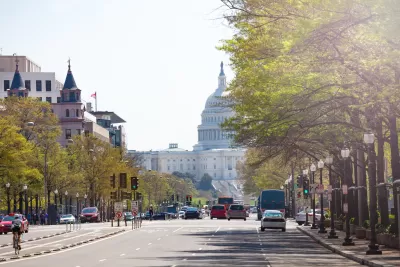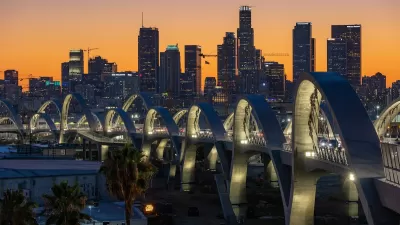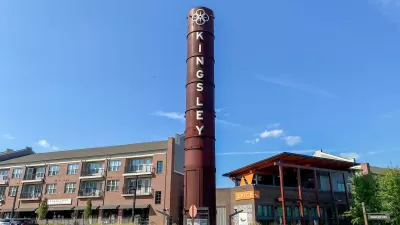To meet its climate goals and revitalize its downtown core, the District must expand its transit and urban amenities to meet the needs of a wider variety of people.

After a disheartening experience at a webinar ostensibly focused on downtown Washington, D.C.’s potential for post-pandemic economic recovery, Caitlin Rogger highlights the need for more multifaceted, multimodal investment in the District in a piece for Greater Greater Washington.
For Rogger, “Downtown recovery will take a lot more than just drivers: a key component is making it easy to get downtown without a car.” But the dismissive attitude of District officials and delayed transit projects signal a lack of willingness to engage with transit users, pedestrians, and cyclists and cater transportation options to their needs.
Moreover, it reflects an overall failure to engage with the needs of parents, elderly people, disabled people, and other groups. “Choices we make now–from employers subsidizing parking but not transit, to building multi-lane roads that are scary to cross for the young, old, and mobility-impaired, to insisting on full-time in-person work only–will determine who participates.”
Rogger points out that key elements of a successful post-pandemic recovery doesn’t necessarily differ much from things that people have advocated for for decades: “things to do, public space, room for sidewalks, bikes, and transit, good air and sound quality, public art–as opposed to space for cars.”
The District already has goals to reduce driving, lower carbon emissions, and encourage more mixed-use neighborhoods, but policy choices have to support those goals. “Workers aren’t the only type of person who can generate valuable activity–even profitable activity,” Rogger writes. Downtowns must be accessible, safe, and attractive for everyone, not just white-collar workers.
FULL STORY: Downtown DC’s recovery hinges on one word

Study: Maui’s Plan to Convert Vacation Rentals to Long-Term Housing Could Cause Nearly $1 Billion Economic Loss
The plan would reduce visitor accommodation by 25,% resulting in 1,900 jobs lost.

North Texas Transit Leaders Tout Benefits of TOD for Growing Region
At a summit focused on transit-oriented development, policymakers discussed how North Texas’ expanded light rail system can serve as a tool for economic growth.

Why Should We Subsidize Public Transportation?
Many public transit agencies face financial stress due to rising costs, declining fare revenue, and declining subsidies. Transit advocates must provide a strong business case for increasing public transit funding.

How to Make US Trains Faster
Changes to boarding platforms and a switch to electric trains could improve U.S. passenger rail service without the added cost of high-speed rail.

Columbia’s Revitalized ‘Loop’ Is a Hub for Local Entrepreneurs
A focus on small businesses is helping a commercial corridor in Columbia, Missouri thrive.

Invasive Insect Threatens Minnesota’s Ash Forests
The Emerald Ash Borer is a rapidly spreading invasive pest threatening Minnesota’s ash trees, and homeowners are encouraged to plant diverse replacement species, avoid moving ash firewood, and monitor for signs of infestation.
Urban Design for Planners 1: Software Tools
This six-course series explores essential urban design concepts using open source software and equips planners with the tools they need to participate fully in the urban design process.
Planning for Universal Design
Learn the tools for implementing Universal Design in planning regulations.
Ascent Environmental
Borough of Carlisle
Institute for Housing and Urban Development Studies (IHS)
City of Grandview
Harvard GSD Executive Education
Toledo-Lucas County Plan Commissions
Salt Lake City
NYU Wagner Graduate School of Public Service





























